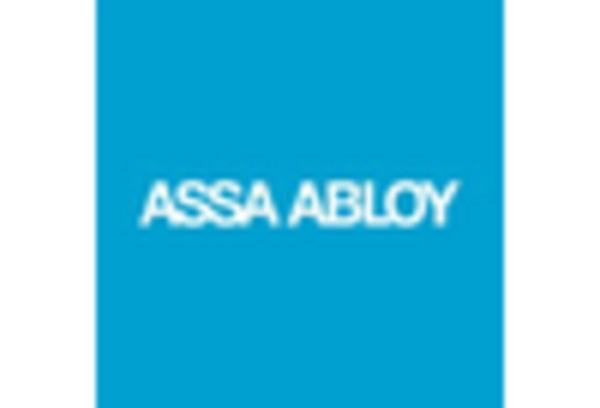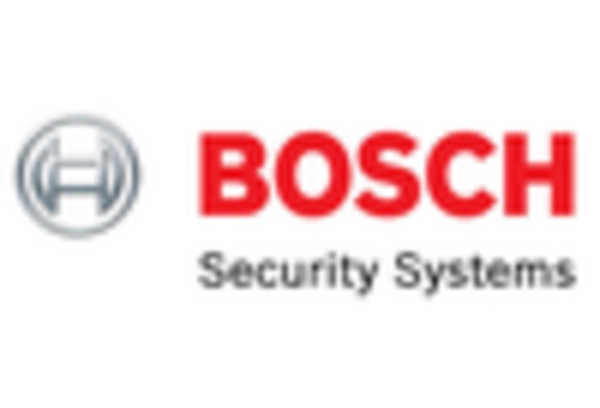Rising Security Concerns
The increasing prevalence of security threats has propelled the demand for robust access control solutions. Organizations across various sectors are prioritizing the protection of sensitive data and physical assets, which has led to a surge in the adoption of access control software. In 2025, the access control software market is projected to reach a valuation of approximately 10 billion USD, reflecting a compound annual growth rate of around 8%. This trend indicates that businesses are investing significantly in technologies that enhance security measures, thereby driving the growth of the access control software market.
Technological Advancements
Rapid advancements in technology are reshaping the access control software market. Innovations such as biometric authentication, mobile access solutions, and IoT integration are enhancing the functionality and appeal of access control systems. These technologies not only improve security but also streamline user experiences, making them more attractive to organizations. As a result, the market is witnessing a shift towards more sophisticated solutions that leverage these advancements. By 2025, it is anticipated that the integration of cutting-edge technologies will contribute significantly to the expansion of the access control software market.
Increased Remote Work Trends
The rise of remote work has necessitated the need for secure access control solutions that can accommodate a distributed workforce. Organizations are increasingly adopting access control software to manage remote access to sensitive information and systems. This trend is expected to drive the growth of the access control software market, as companies seek to ensure that their data remains secure, regardless of employee location. By 2025, the demand for remote access solutions is projected to account for a notable share of the market, reflecting the ongoing transformation of work environments.
Regulatory Compliance Requirements
Stringent regulatory frameworks governing data protection and privacy are compelling organizations to adopt access control software. Compliance with regulations such as GDPR and HIPAA necessitates the implementation of effective access management systems. As organizations strive to meet these legal obligations, the access control software market is experiencing heightened demand. In 2025, it is estimated that compliance-related investments will account for a substantial portion of the overall market growth, as companies seek to avoid penalties and enhance their reputations through responsible data management practices.
Growing Demand for Integrated Solutions
There is a notable shift towards integrated security solutions that combine access control with other security measures, such as video surveillance and alarm systems. Organizations are recognizing the benefits of a unified approach to security management, which enhances overall effectiveness and reduces operational complexities. This trend is likely to propel the growth of the access control software market, as vendors develop solutions that offer seamless integration capabilities. By 2025, the market is expected to see a significant increase in demand for these comprehensive security solutions, reflecting a broader trend towards holistic security management.


















Leave a Comment